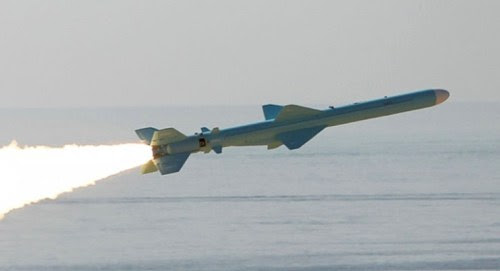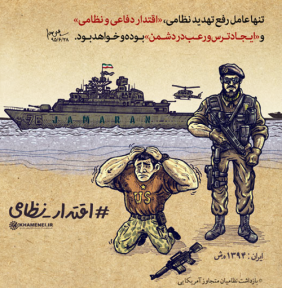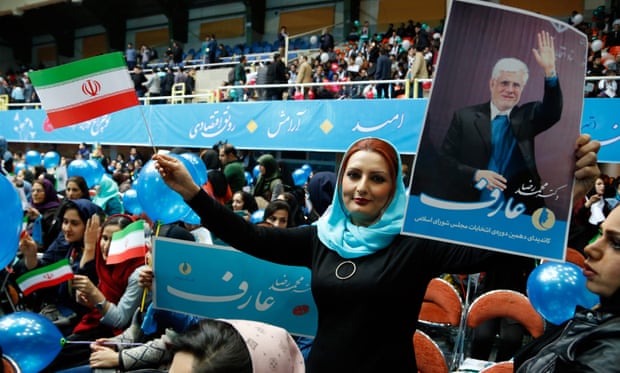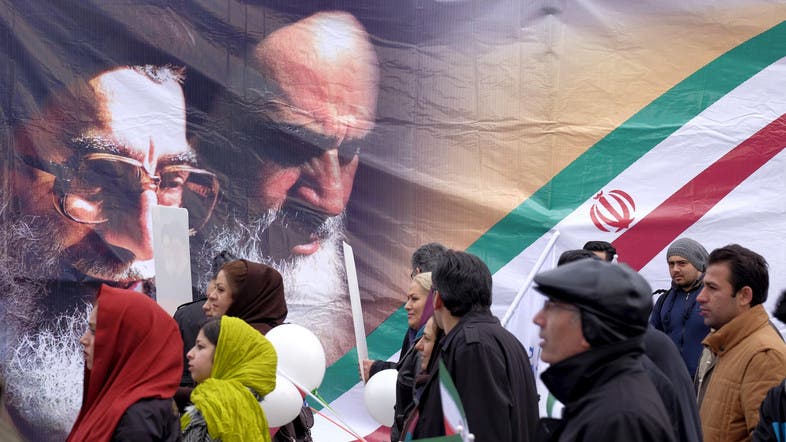By Maha Hamdan.
Iranian-backed Houthi rebels have been waging war against the Yemeni army and the Saudi-led Arab coalition in Yemen for several years. Since the beginning of October 2016, the conflict has assumed a new naval and international dimension that could endanger civilian freedom of navigation in the Red Sea’s Bab el-Mandeb Strait, which serves as a gateway for oil tankers headed to Europe through the Suez Canal.
On October 1, the Houthi-allied Yemeni Republican Guard launched what appears to have been a Chinese-made C-802 anti-ship cruise missile (ASCM) near the Red Sea port of Mocha in the strategic Bab el-Mandeb shipping lane. Another possibility is that it was a Noor guided missile (the Iranian version of the C-802) that Iran supplied to the Houthi rebels as part of its extensive military and political assistance to them. Iran supports Houthis in their struggle to take control of Yemen, including their firing of missiles at Saudi Arabia.2 The maximum range of the advanced version of the missile is 170 km. (apparently Iran supplied the 120-km. version).

Map of Yemen. Note the Bab el Mandeb choke point (CIA)
The missile struck an HSV-2 Swift hybrid catamaran belonging to the United Arab Emirates navy operating in the area as part of the Saudi coalition. The ship was carrying a humanitarian cargo as well as people injured in the combat areas of the city of Aden – the temporary capital for the Yemeni government since the Houthi conquest of Sana’a. This is not the first time the Houthis have claimed they are acting against ships of the Saudi-led Arab coalition in the area of Bab el-Mandeb.
The UAE Foreign Ministry said in a statement: “The targeting of the civilian ship in an international channel has serious implications for freedom of navigation, and is an act of terror.”3 The United Nations also condemned the act. It is worth noting that, during the Second Lebanon War in 2006, a Noor missile that Iran supplied to Hizbullah struck the Israeli naval vessel INS Hanit and killed four crew members.

C-802 Chinese designed missile
The Houthi rebels claimed to have fired the missile that destroyed the UAE ship. They also posted videos on social networks that document the surveillance, the launch of the missile, the moment it hit the ship, as well as rocket fire toward rescue boats that came to the area. 4They said the ship was advancing toward Mocha.5 Earlier, on September 26, Houthi forces encamped on the Hanish Islands and fired artillery shells at Eritrean forces at the seaport and the military airport at Assab in Eritrea. The Houthis claimed that the attack was a response to the aid Eritrea is giving to the Saudi-led Arab coalition by allowing it to use the port, which is very near the Bab el-Mandeb Strait. 6After the October 1 incident, the damaged ship was able to reach the port of Assab.

The ship when it once belonged to the U.S. Navy (DOD photo)
A few days after the missile was fired at the UAE ship, the Houthis, under the name Yemeni Navy Coastal Defense, issued a warning to any vessel belonging to the Saudi-led coalition not to take action against Yemen, with a reminder about the strike on the UAE vessel. The vessels were warned not to approach Yemeni territorial waters without permission from the Yemeni authorities. The statement cautioned: “In case of witnessing any uncoordinated movements near Yemen’s territorial waters or trespass of our sea border, the vessels of Saudi Arabia and its allies will be destroyed.”7
Houthis Issue Warning against Trespassing
Following the firing of the missile at the UAE ship, the United States dispatched three naval ships to the area. The ships – the guided-missile destroyers USS Nitze (DDG-94) and USS Mason (DDG-87) and the amphibious transport dock USS Ponce (AFSB (I)-15) – are on station off Yemen near the Bab el-Mandeb Strait. Spokesmen of the American fleet said the United States was acting with allies in the region to ensure freedom of navigation and trade.
It appears the warning was also meant for U.S. Navy vessels operating in the area. On October 9, two presumed cruise missiles, launched within 60 minutes of each other from Houthi-controlled territory in Yemen,9 targeted the USS Mason (DDG-87) in the same area; on October 11, Iranian-backed Houthi militants fired two more cruise missiles within a 60-minute window at the USS Mason.
The ship’s crew employed a variety of onboard defensive measures to defend the guided-missile destroyer and nearby USS Ponce. Mason launched two Standard Missile-2s (SM-2s) and a single Enhanced Sea Sparrow Missile (ESSM). In addition to the missiles, the ship used its Nulka anti-ship missile decoy. No damage or injuries were reported. The attack marks the first time in recent memory that a U.S. Navy vessel was forced to engage its on-board defense systems.
Bryan Clark, a naval analyst at the Center for Strategic and Budgetary Assessments and former aide to retired former Chief of Naval Operations Adm. Jonathan Greenert, said following the incident that “It might be the first time the SM-2 was used against an actual threat for which it was designed….It’s definitely the first time ESSM has been used….This is obviously a huge deal.”11
In retaliation, the USS Nitze launched Tomahawk cruise missile strikes knocking out three coastal radar sites in areas of Yemen controlled by Iran-aligned Houthi forces “that were active during previous attacks and attempted attacks on ships in the Red Sea,” said an American official. The areas in Yemen where the radars were located were identified near Ras Isa, north of Mukha, and near Khoka.12
President Obama Authorized Strikes against Houthi Radar
The strikes, authorized by President Barack Obama, represent Washington’s first direct military action against suspected Houthi-controlled targets in Yemen’s conflict. Navy Capt. Jeff Davis said, “Anybody who takes action, fires against U.S. Navy ships operating in international waters, does so at their own peril….We’re going to find out who did this and we will take action accordingly.” He added that the incident is being reviewed “up and down the chain of command” and that military intelligence specialists are tracking the individuals responsible.
On the day the missile was fired at the UAE ship, Iran was holding an annual ceremony for those who have contributed to the resistance. The first place among the resistance movements was taken by Houthi leader Abd al-Malek Houthi. The personal certificate of merit for “Resistance 2016” was given to his assistant by Ali Jafari, commander of the Iranian Revolutionary Guard Corps. 14 Arab media saw the award as further evidence of Iran’s growing involvement in the Yemeni conflict. Notably, unlike in the past, Iran is no longer concealing its involvement in Yemen and the aid it is providing to the Shiite Houthi rebels.
The firing of guided shore-to-sea missiles at U.S. and UAE ships constitutes an escalation in the Yemeni conflict and could pose a threat to a key international sea lane in the Red Sea and the Gulf of Aden. The ability to fire guided missiles, along with their long range (120 km.), endangers not only the coalition’s freedom of action and ability to enforce the Arab embargo but also civilian vessels, including tankers that operate in the area.
Iran’s aid to the Houthi rebels has apparently increased beyond Tehran’s ongoing assistance to fighting at the different fronts in Yemen. Iran is prepared to provide tie-breaking weapons that could help the Houthis breach the naval blockade that Saudi Arabia and its coalition partners have imposed on Yemen. In the past, weapons-smuggling ships have been intercepted as Iran was trying to transfer arms to the Houthi rebels. It appears, however, that with the Houthis holding their own in the battles, the embargo is ineffective and Iran has found other lanes for transferring weapons to the Houthis.
The ceasefire in Yemen collapsed at the beginning of August. Despite attempts to renew the dialogue (with the involvement of U.S. Secretary of State John Kerry and the UN envoy to the region) between the Houthis, who are Iran’s proxies, and the Yemeni government headed by Abd Rabbuh Mansur Hadi, which is backed by the Saudi-led Arab coalition, the war is continuing and even expanding. This war constitutes an additional arena for the “Battle of the Titans” between Iran and Saudi Arabia, which is also being waged in other venues including Syria, Iraq, and Bahrain, and is part of the realignment of the Middle East in the aftermath of the Arab Spring.
Iran Fills the American Vacuum
A solution in Yemen appears distant. International interest in the conflict is almost nonexistent, especially in light of the ongoing humanitarian crisis in Syria. The departure from Yemen of most of the American Special Forces left a vacuum; it has been filled by Iran and the terror organizations Al-Qaeda in the Arabian Peninsula (AQAP) and Islamic State, which is active in southern Yemen. From time to time, unmanned American drones fire missiles at these groups, but they remain active in the absence of international concern. Significantly, the UAE is playing a central role in the Arab coalition in Yemen. Along with its forces’ military activity, mainly against AQAP near the port cities of Al-Mukalla and Aden in southern Yemen, the UAE provides extensive humanitarian aid to the residents of the area as part of the struggle against terror. The UAE is also trying to get the tribes in the area to support the Yemeni central government, which is important to shore up.
Also apparent in Yemen are the absence of the American player and the weakening of its overall policy in the Middle East. Not far from Yemen in the Persian Gulf and the Strait of Hormuz, Iranian fast boats continue to harass and provoke American warships, which operate without any appropriate response. Meanwhile, Iran continues to build its naval and missile power, with which it can project force in the Arabian Gulf and beyond to the Gulf of Aden and the Red Sea – where Iranian ships are active as part of the war on pirates, but also as a signal to the United States that Iran views these areas as a natural zone of influence.
Iran views the maritime domain as an important channel for its influence. It enables it to protect its borders as it develops a special battle doctrine, “swarming,” to confront technologically superior (American) naval forces. It also enables Iran to ship aid to its proxies including the Houthis in Yemen, the Palestinian terror organizations, and Hizbullah.
The ongoing war in Yemen serves as a perfect venue for the Iranian Revolutionary Guard Corps Navy (IRGCN), IRGC missile forces, IRGC Quds forces, and Hizbullah to battle-test some of their new weapons against Iran’s enemies – Saudi Arabia and its Arab-coalition and its arch enemy, the “Great Satan,” the United States.

Part of a cartoon on Khamenei’s webpage
Part of a cartoon on Khamenei’s webpage.15 Caption: “Iranian leader conveys a strong message – the Islamic Republic of Iran – unlike in the past when foreign powers exploited its natural resources and humiliated its people – is powerful enough to defend itself and humiliate its enemies.”
For Iran, Yemen is a perfect venue for such tests. Iran is preparing for future engagement with the U.S. Navy in the Persian Gulf where the IRGCN frequently provokes and sometimes humiliates American naval presence in the area. The Americans’ reaction to launching the missiles against its ships may change the dynamics. Playing the incident down will again play into Iranian propaganda and bolster Iran’s already overconfident and defiant stance.









